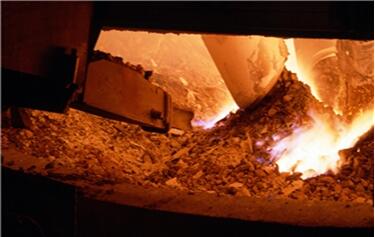
- English
- Español
- Português
- русский
- Français
- 日本語
- Deutsch
- tiếng Việt
- Italiano
- Nederlands
- ภาษาไทย
- Polski
- 한국어
- Svenska
- magyar
- Malay
- বাংলা ভাষার
- Dansk
- Suomi
- हिन्दी
- Pilipino
- Türkçe
- Gaeilge
- العربية
- Indonesia
- Norsk
- تمل
- český
- ελληνικά
- український
- Javanese
- فارسی
- தமிழ்
- తెలుగు
- नेपाली
- Burmese
- български
- ລາວ
- Latine
- Қазақша
- Euskal
- Azərbaycan
- Slovenský jazyk
- Македонски
- Lietuvos
- Eesti Keel
- Română
- Slovenski
- मराठी
- Srpski језик
What factors affect the dimensional accuracy of investment castings?
2024-02-01
Under normal circumstances, the dimensional accuracy of precision castings is affected by many factors such as the structure of the casting, casting material, molding, shell making, roasting, pouring and other factors. Improper setting and operation of any of these links will shorten the precision casting. The rate changes, causing the dimensional accuracy of the casting to deviate from the requirements. The following are several major factors that cause the dimensional accuracy shortcomings of precision castings:

What are the factors that affect the dimensional accuracy of investment castings?
(1) Influence of the material of precision castings: a. The higher the carbon content in the material, the smaller the linear shrinkage rate; the lower the carbon content, the greater the linear shrinkage rate. b. The forging shortening rate of common materials is as follows: casting shortening rate K=(LM-LJ)/LJ×100%, LM is the cavity size, and LJ is the casting size. K is affected by the following factors: wax pattern K1, casting structure K2, alloy type K3, and pouring temperature K4.
(2) The influence of molding on the linear shrinkage rate of precision castings: a. The influence of wax injection temperature, wax injection pressure, and holding time on the size of the investment mold is most obvious with the wax injection temperature, followed by the wax injection pressure, and the holding time. It ensures little impact on the final size of the investment mold after investment molding. b. The linear shortening rate of wax (mold) material is about 0.9-1.1%. c. When the investment mold is stored, further shrinkage will occur, and the shrinkage value is about 10% of the total shrinkage. However, after 12 hours of storage, the investment mold size is basically unchanged. d. The radial shrinkage rate of the wax pattern is only 30-40% of the lengthwise shrinkage rate. The impact of the wax injection temperature on the free shrinkage rate is far greater than the impact on the hindered shrinkage rate (the optimal wax injection temperature is 57-59 ℃, the higher the temperature, the greater the shortening).
(3) The influence of the compact casting structure: a. The thicker the wall of the casting, the greater the shrinkage rate; the thinner the wall of the casting, the smaller the shrinkage rate. b. The free shrinkage rate is large and the obstacle shrinkage rate is small.
(4) Influence of mold shell baking: Since the shrinkage coefficient of the mold shell is small, when the mold shell temperature is 1150°C, it is only 0.053%, so it can be ignored.
(5) Effect of casting temperature: The higher the pouring temperature, the greater the shrinkage rate; the lower the pouring temperature, the smaller the shrinkage rate, so the pouring temperature should be appropriate.
(6) Influence of shell-making materials: zircon sand, zircon powder, Shangdian sand and Shangdian powder are used. Because their shrinkage coefficient is small, only 4.6×10-6/℃, they can be ignored.



